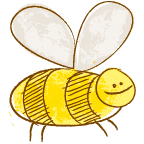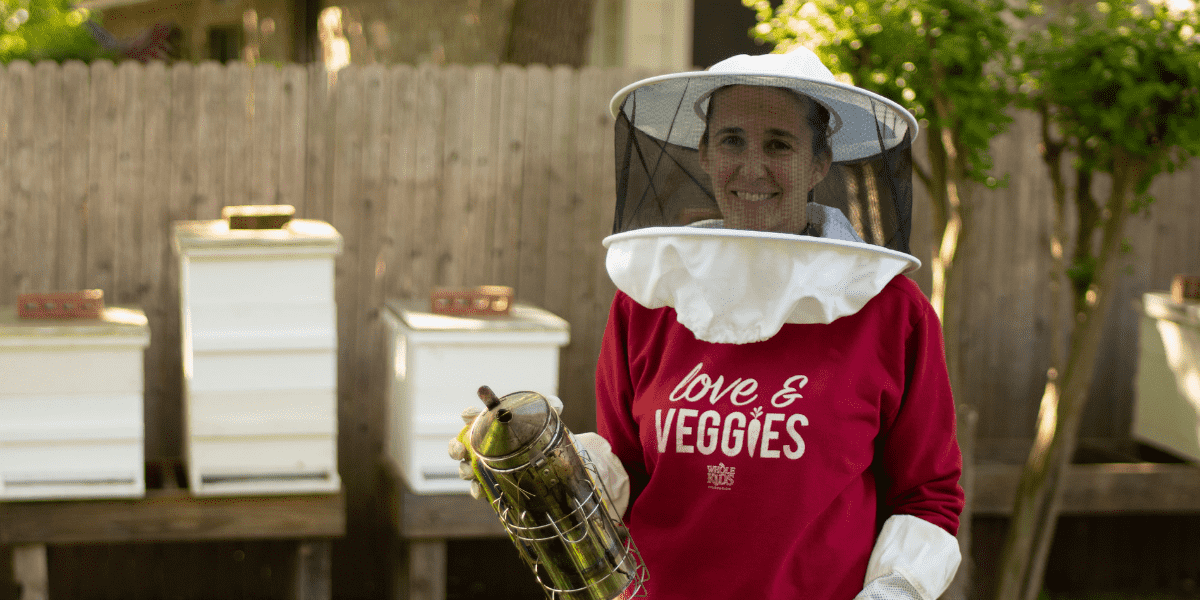This is a bee yard in Wimberley, Texas where we got our first bees. And found our first bee mentor.
After Whole Kids Foundation funded its first school beehive in 2015, we’ve been a little bee-obsessed. Nearly 400 beehive grants later, and just like our students, teachers and schools, we understand how important pollinators are to our food system.
One in three bites of food is thanks to our pollinators.
Because I love food and have worked in the food business my whole life, I have been a bee evangelist since we helped that first school get its hive four years ago. Last year, I became a beekeeper.
Truth: People Who Keep Bees LOVE to Talk About Their Bees!
The universe that is a beehive is endlessly fascinating, mesmerizing and is full of useful lessons for everyday life. Which makes is easy to talk about bees too much.
As my family embraced beekeeping, we were asked so many questions. Even our Whole Kids team was curious to learn about the day to day workings of a hive.
I want to be clear – I am a novice. Last May, our family took a trip to Wimberly, Texas to pick up our first two hives of bees. My husband is deeply obsessed. He’s got what I like to call his BEE-hD from Youtube. There are THOUSANDS of hours of instructional videos from beekeepers all around the world on the internet!
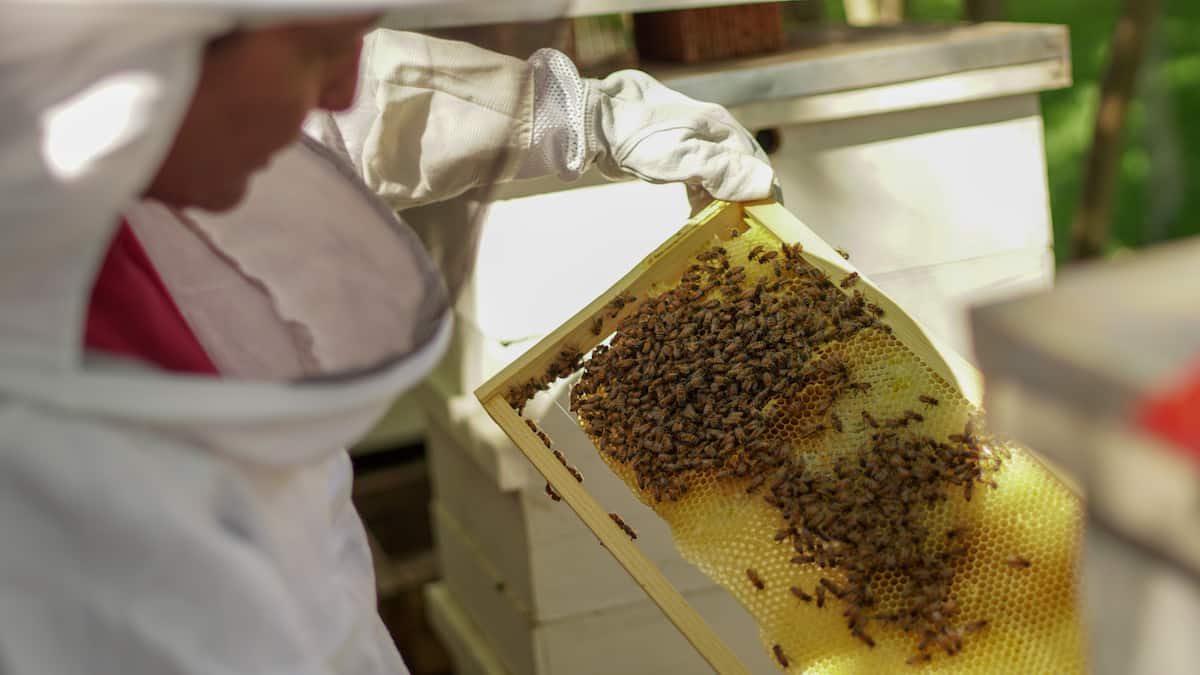
Overcoming Fear: Why Bees Don’t Want to Sting
Most of us grow up learning to fear bees because they can sting. One of the most important reasons we began funding beehives for schools was to help kids identify and understand pollinators – especially honey bees, because they DO NOT want to sting you.
Any honey bee you meet is focused on gathering nectar and pollen for her colony. All foragers are female bees. If a honey bee flies near you, she is literally trying to figure out if you’re a flower. In fact, when I’m in my garden (which is next to seven hives), I often just softly chant – not a flower, not a flower – it helps me remember that I can co-exist with these magical creatures.
If you have the special privilege of having a bee land on you – just watch her. Notice the fuzzy area right behind her head. If it’s bright yellow, she’s a young forager. If it’s darker and less fuzzy, she’s older. Honey bees, during the spring and summer, live for about 40 days. They literally work themselves to death gathering food.
A honey bee will sting when she feels threatened – and for us humans, that means swatting.
If you swat a honey bee there is a 99 percent chance you will get stung. And then, that bee will die.
There are times when bees are more protective – generally, when you are near their hive, when they are without a queen or when it’s cloudy or rainy. I’ve learned when we inspect our hives at either of those times, to wear my leather gloves and make sure my pant legs are secure. There’s nothing like a bee landing on your shoe and going for a journey up your leg!

Pro Tip #1: If you smell like a flower…the bees will really want to see if you’re a flower. I learned this the hard way. All the body care products I use are botanically based: pear shampoo, fruit-enzyme moisturizer and lavender hand lotion. I didn’t understand why bees were so attracted to my hair. And there are few things more unnerving than a bee in your hair. I think this must be where the saying “a bee in your bonnet” came from! So, if you’re going to a picnic, to a garden or to visit an apiary – maybe skip the shower.
Pro Tip #2: Don’t eat a banana before inspecting a hive (or going somewhere where bees will be). The pheromone released when a bee stings apparently smells like bananas. It’s a signal to other bees that there is danger … and they are more likely to sting.
If you do get stung…
- 1) Walk away slowly.
- 2) Get the stinger out as soon as possible. You can do this just by scraping over the skin.
- 3) Pick a remedy. I use a cream called Sting Stop that provides immediate relief. Some people say applying an onion cut in half helps. And ice can help with swelling.

Bee Basics: Learning to Speak Bee
I felt like I got a crash course in bee-ese so here are some terms to know:
Frame – A wooden rectangle in the hive where bees will build comb
Honey Comb - The structure made from beeswax where the queen lays her eggs and the bees store nectar, pollen and honey
Beeswax – Tiny pieces of wax made inside the bee’s body that they secrete and form into a perfectly symmetrical comb
Cell – One hexagonal space in the honey comb where the queen will lay one egg, the nurse bees will feed and then cap the cell while the larvae develops
Drone - A boy bee, they are easy to spot because they are bigger than the females, when you look at a frame and see cells capped with a dome, those will be drones. They go out and mate with queens so they become fertile. Once a drone mates, he dies.
Honey Super – When a hive is strong and has enough bees to sustain the colony, many beekeepers will add a box called a honey super. This is a box containing a set of frames where the bees will store their honey. To prevent the queen from laying eggs in those frames, a divider called a queen excluder is used to keep her out of the super. When the bees have filled the super with honey, it can be removed and extracted. It’s important for the keeper to always make sure the bees have enough honey for themselves. In that way, honey is seasonal – how much you get depends on the “flow” or the abundance of nectar and pollen from blooming plants.
Bee Supportive…
There are a few simple things everyone can do to support our pollinators.
- NEVER swat a honey bee
- Grow plants specifically for the bees - and let other plants (like veggies) flower before you pull them for the season
- Help others understand honey bee behavior so they don’t spray to kill them or use chemicals (fertilizers/pesticides) that could be harmful
- Buy only local honey - It helps mitigate allergies and supports a thriving local bee ecology which means that more food can be grown locally, creating a ripple effective of good
- Talk about bees constantly - not everyone enjoys this so much, but I’m always gratified by the response, “I had no idea!” - I know, right?!

What I Love Best About Keeping Bees…
Is that I am constantly learning.
Bees have so many lessons to teach us. Teamwork – bees use their bodies to make chains to measure the spaces where they are building comb. Conservation – bees let nothing go to waste. If we have a piece of comb leftover from a hive rescue, the bees will clean the honey out of the cells and then will cut the comb into tiny pieces so they can reuse the wax! Focus – every bee has a specific job, the activity on a frame of bees is a like a ballet.
And bees are natural healers. Everything bees create has healing properties. Honey has natural antibacterial properties and was used for years to treat wounds. Propolis, what we call bee glue, is a substance the bees produce to repair parts of their hive. It has been used as an anti-inflammatory. I’ve even read that the air from beehives (called apitherapy) is being used to treat respiratory conditions.
But you should really hear from a junior beekeeper about what motivates him!
Thank you for BEE-ing curious. And supporting the incredible lessons our bees share with kids (and adults) everywhere!
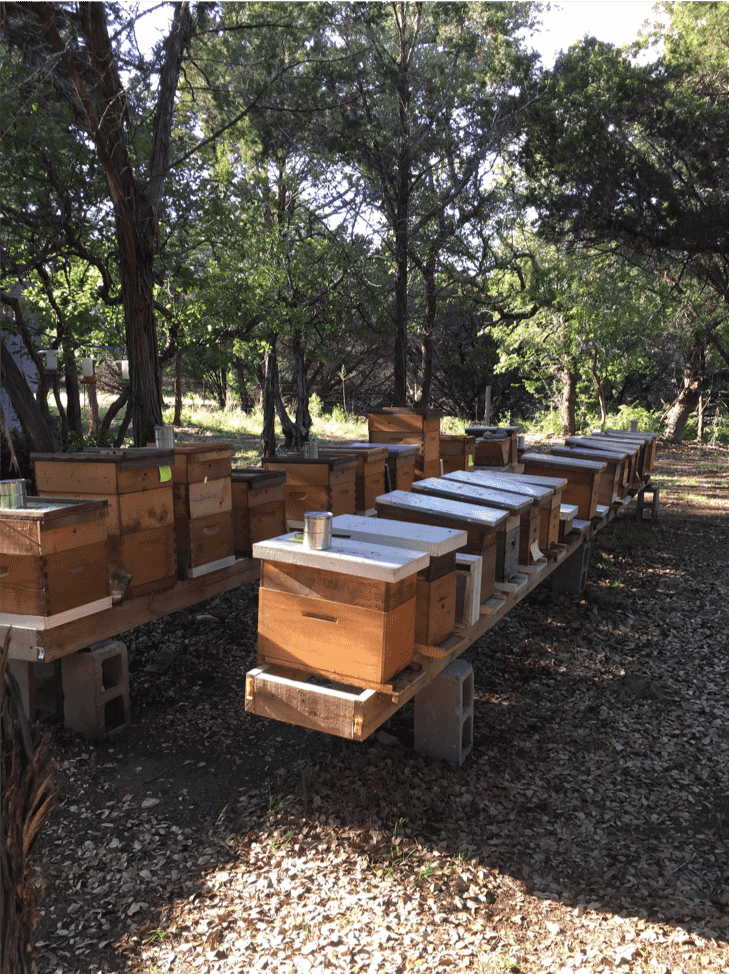
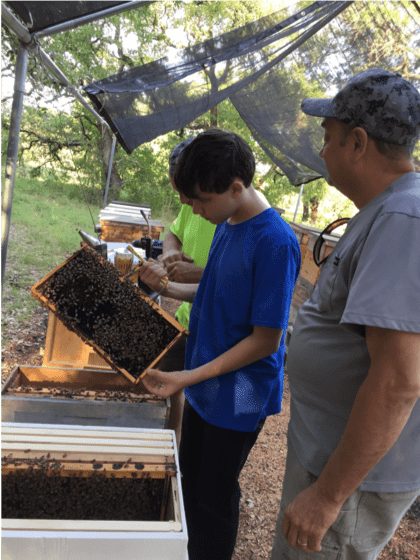
This is my husband and son at the bee yard, our mentor is right behind them. During “the flow,” when food is plentiful for the bees…they are singularly focused on gathering pollen and nectar. You can see that they are inspecting a frame of bees without ANY protective gear. I DO NOT recommend this because it is our human nature and fear that can cause stings. But this mentor knows his bees so well, we had no fear.
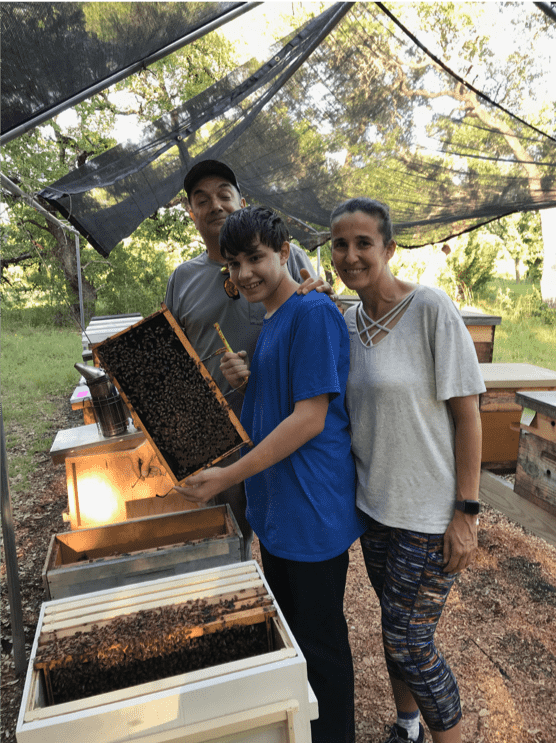
These bees were our first. Can you see the pride and excitement we have as stewards to this colony?
